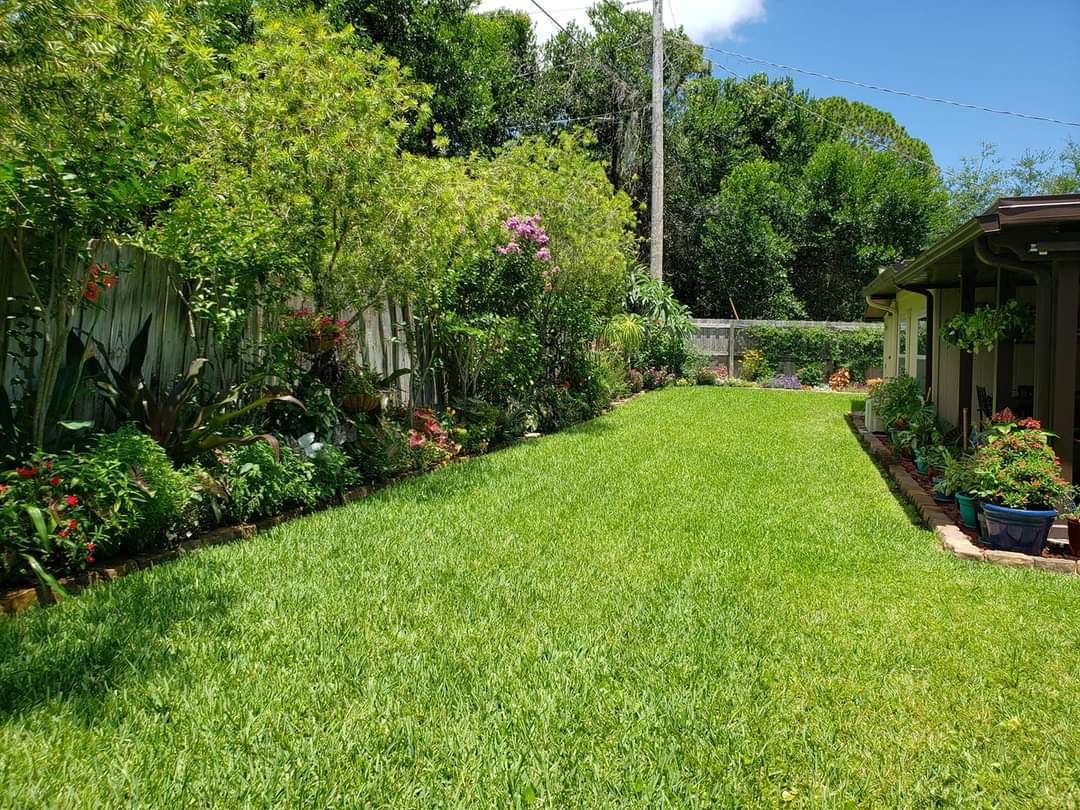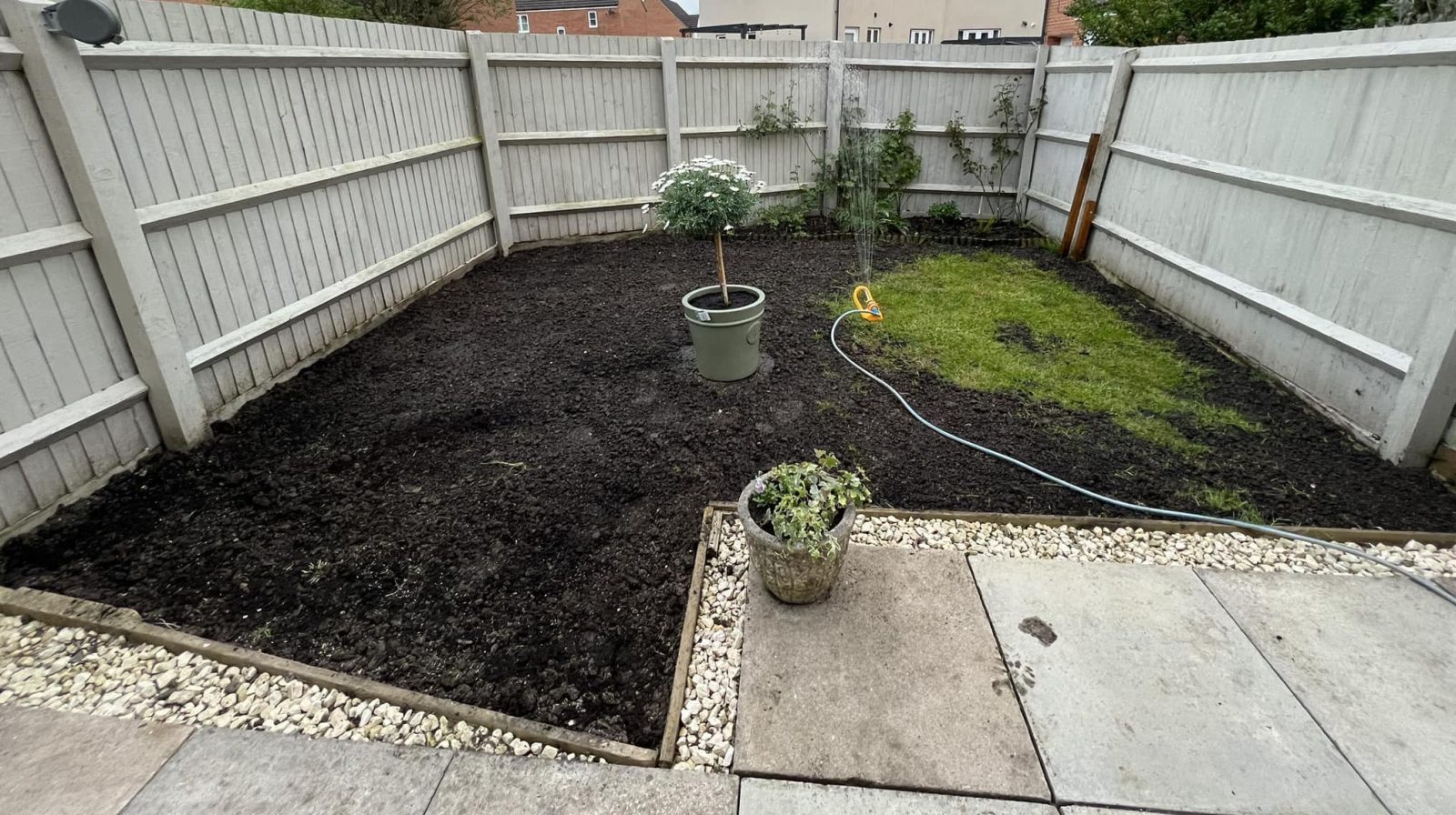Growing grass in clay soil isn’t a common occurrence since this soil is typically heavy and compacted; hence not conducive for grass growth. Generally, developing a healthy, lush lawn requires effort, and your work is cut out for you when working with less-than-ideal conditions.
However, although you will likely have to do more to establish a beautiful grass lawn with clay soil, this doesn’t mean it isn’t doable. Do not despair if the soil in your yard isn’t already perfect for growing grass because it rarely is.
Therefore, don’t be discouraged or abandon your dream of green, healthy grass.
Can Grass Grow In Clay Soil?

Yes, grass can grow in clay soil even though this soil presents some challenges that make grass growth hard. This soil type has high water retention capacity and fine texture, which can make it compact when it dries out and cause drainage issues. However, you can work on this soil to make it conducive for grass growth.
To promote grass growth on clay soil, improve drainage, add sand, select the right grass type, aerate the lawn, and mow correctly. In addition, water and fertilize the grass appropriately.
Also Read: How To Fix Yard Drainage Issues
How to Tell if You Have Clay Soil
Do not just assume you have clay soil in your lawn because that may impact how you grow your grass. You can tell whether you have clay soil through the following:
a) Texture
Clay soil has a distinct sticky, heavy, and dense texture. You likely have clay soil if you can effortlessly form a sticky, compact ball from your lawn soil.
b) Water Retention
Clay soil holds water for a long time, so observe how long it takes for the water to drain from your lawn after rainfall or irrigation.
c) Cracking and Compaction
If your lawn’s soil surface cracks, particularly during dry periods, it’s probably clay soil. Additionally, this soil feels rigid and compact, especially after heavy rainfall or foot traffic
d) Poor Drainage
Clay soil’s fine particles and compact nature make it susceptible to poor drainage. Therefore, your lawn likely comprises clay soil if you find waterlogged areas or with standing water long after precipitation or irrigation.
e) Plant Growth Challenges
Grass and other plants may struggle to establish and grow in clay soil. It could be a sign of clay soil if your lawn struggles to thrive, has stunted growth, has shallow root systems, or has frequent water-related issues.
Read More: Can you lay sod over sand
How to Improve Clay Soil for Lawns
These steps will help improve clay soil quality, drainage, and nutrient content to make it ideal for grass growth.
1. Adjust Soil’s pH
Most grasses prefer a slightly acidic to neutral pH range (around 6.0 to 7.0), so test the soil’s pH level and adjust it if necessary. Add lime to increase the pH and sulfur to lower it.
Also Read: Why and How to Lime a Lawn
2. Add Organic Matter
Adding organic matter to a lawn with clay soil helps improve its structure, drainage, and nutrient-holding capacity. You can use compost which adds nutrients, enhances moisture retention, and boosts soil structure. On the other hand, well-rotted manure provides nutrients and organic matter.
Leaf mold improves the clay soil’s drainage and moisture retention, and so does peat moss.
3. Aerate
Clay soils tend to be compact, so they lack sufficient air spaces, thus hampering the grasses’ root growth. Aeration helps combat compaction, improves soil structure, and promotes root growth.
Aerating your lawn will improve its structure and allow better water penetration. Rent or use a core aerator to remove plugs of soil and make channels for air, nutrients water, and nutrients to get to the grasses’ roots.
4. Add Sand Or Grit
Introducing sand or grit to your lawn helps make clay soil conducive for grass growth by boosting its structure and drainage. For instance, the sand or grit’s larger particle size creates larger pore spaces in the soil, allowing water to drain more freely.
Moreover, sand or grit helps break up the clay soil’s compact nature by separating the clay particles. This improves aeration and root penetration. This addition also helps stabilize the soil structure, reducing erosion caused by heavy rainfall or irrigation.
Aim for a 50:50 ratio when incorporating sand or grit into your clay soil lawn to help strike a perfect balance between them.
5. Soil Amendments
Typically, soil amendments help boost soil structure, fertility, and health. Some amendments enhance drainage, nutrient content, and workability when incorporated into clay soil. The soil amendments beneficial to clay soil include gypsum, organic matter, perlite, vermiculite, lime, and organic fertilizers.
6. Mulching
You can also make clay soil ideal for grass growth using mulch. It helps with moisture retention, weed suppression, temperature regulation, erosion control, and organic matter addition.
How to Grow Grass in Clay Soil

Here’s a step-by-step guide on how to grow grass in clay soil:
1) Soil Preparation
Remove any existing vegetation, weeds, rocks, and debris from your lawn, then perform a soil test to determine its pH level and nutrient content. Adjust the pH, if necessary, to a range suitable for grass growth.
Add well-rotted manure, compost, or other organic matter like into your lawn soil’s top 6 to 8 inches. The organic matter layer to introduce to your lawn should be 2-to-3-inch thick.
2) Select The Best Grass for Clay Soil
The grass you plant should be able to perform on clay soil. These include Fine fescues, some perennial ryegrass, and Kentucky bluegrass.
3) Seeding or Sodding
You can broadcast the grass seed evenly over the prepared soil, then lightly rake the soil to cover the seeds with a thin layer of soil. Seeding is cheaper and easy to do compared to sodding, but your lawn will take longer to establish itself and can be susceptible to weeds.
Alternatively, lay sod over the prepared soil, ensuring the pieces fit tightly together. Sodding helps you achieve a thick, full lawn faster and blocks weeds well, but the initial costs are higher, and proper installation is key.
4. Watering
Proper watering is essential for successful grass establishment in clay soil. So, encourage the roots to grow deeper after laying sod or planting the seeds by watering your grass infrequently but deeply.
Water your lawn in the early morning to lower evaporation and allow the grass blades to dry before evening, reducing disease risk.
5. Fertilization
After growing grass, fertilize your lawn to ensure your new yard gets the essential nutrients. The manufacturer’s instructions provide details on the application rates and timing. Also, avoid over-fertilization, as excessive nitrogen can lead to weak grass and increased thatch formation.
Best Grass For Clay Soil
Not all grasses thrive on clay soil. For this reason, choose the type that can tolerate challenges posed by compact soil and poor drainage.
These include:
- Tall Fescue
- Kentucky Bluegrass
- Fine Fescue
- Perennial Ryegrass
Caring for Grass in Clay Soil
You’ll need to address the challenges grass will face in clay soil to ensure it thrives. These tips will help:
a) Soil Aeration
Regular soil aeration is crucial to improve soil structure and promote root growth. Core aeration, using a machine or manual tools, helps create channels in the soil, thus letting nutrients, air and water get to the roots.
b) Proper Watering
Water your lawn deeply but infrequently because clay soil retains water for longer. Additionally, monitor the soil moisture levels and adjust watering accordingly based on weather conditions and the grass’s needs to avoid overwatering the lawn and making it waterlogged.
c) Mulching
Apply a layer of organic mulch, such as wood chips or straw, around trees, shrubs, and garden beds to reduce soil erosion and improve moisture retention.
d) Fertilization
Regular fertilization helps maintain a healthy lawn in clay soil.
e) Mowing Height
Keep your grass height around 3-4 inches by mowing well to promote healthy root development.
f) Overseeding
Over time, clay soil can become compacted and thin out the grass. If that happens, overseed your lawn.
g) Weed Control
Weeds can be particularly problematic in clay soil, so regularly inspect your lawn for weeds and address them promptly. Use manual removal, herbicides labeled for lawn use, or other weed control methods as appropriate.
h) Soil Amendments
Incorporate organic matter into the soil periodically to improve soil structure, drainage, and nutrient-holding capacity over time.
Frequently Asked Questions
FAQs
Can Grass Roots Penetrate Clay Soil?
Yes, grass roots can penetrate clay soil. However, it won’t be easy because clay soil’s dense and compact nature can hinder root growth and make it more difficult for roots to penetrate deeply.
Can I Put Topsoil Over Clay?
Yes, you can put topsoil over clay soil to improve its quality and create better conditions for planting grass. The topsoil help alleviates challenges associated with clay soil, such as compaction, poor drainage, and nutrient deficiencies.
Conclusion
A well-balanced loam soil is perfect for growing grass since it facilitates adequate airflow, root penetration, and beneficial microbial activity. However, you can also improve clay soil to grow grass. Aeration, mulching, soil amendment, and adding sand help this soil type to support grass.

Hey there, I’m Derek Schew, a writer for Lawnholic.com, where we cover everything and anything related to lawns. As someone who’s spent countless hours tending to my own lawn, I’m passionate about sharing my knowledge and helping others achieve the perfect yard. From lawn care tips to product reviews, I’m committed to providing our readers with the most accurate and up-to-date information available. So whether you’re a seasoned lawn enthusiast or just getting started, I invite you to join our community and discover the joys of a lush, green lawn.
